They, as in the metaphorical “they” to whom everyone is always looking for advice on any number of life’s great questions, say that it is perfectly normal, in fact expected, for a person living abroad, at one time or another, to experience a sort of culture shock. “They” even have theories about how and why it occurs and can actually map the thing out. (In case you are wondering, it is in the shape of a “U” with the first peak being the honeymoon phase during which everything is, well, like a honeymoon…the best kind. The literal and metaphorical low point is the bottom where the actual culture shock in its ugliest form rears its head, and during this time one tends to reject the new culture believing that everything in his/her own culture is somehow better, right, or normal. The other peak is the adjustment when one starts to feel comfortable in a culture, and this all eventually levels off.) Most people who are on their way to spend a significant amount of time abroad are perfectly aware of this phenomenon, and many actually take precautions to reduce its effects.
I, however, had felt quite certain until recently that I had outsmarted “them.” “Their” scientific theories and U-curve graphs just didn’t apply to me. I mean I had spent three blissful months abroad in London without the slightest sensation of sliding down into the depths of the U. Culture shock? Nope, not me. Sorry guys, but I just don’t fit the mold. Reverse culture shock…maybe. (Tell me you would not experience the same when coming from London where your Friday night, if you weren’t in Barcelona, consisted of a trip to the Royal Ballet, followed by a glass of good cider, and maybe some dancing with your friends, back to a place where a big night out consisted of reading a bit of a good novel followed by upgrading from a toddler to a small cone at the Zesto if you were feeling really crazy. Not that a good book and a strawberry cheesecake twist cone don’t sound pretty good right now, but still.) Culture shock just wasn’t for me.
And I’ve been happily riding the honeymoon wave in Singapore for the last six delightful months. But this week the surf broke and I ate it...hard.
Trying to figure out which side of the sidewalk to walk on (by the way, as of yet I’ve pretty much decided that there is no logical order to this here) no longer seemed like a game. It was just annoying trying not to run into every woman who decided to stop suddenly and change directions or to maneuver my way across the street in the midst of the oncoming throng of people walking in no particularly recognizable pattern. (Side note: In college I wrote a thesis paper for an independent study about the differences between Asian and Western dance forms that arise due to cultural variations. The different ways that members of these cultures relate to space was a major section in my paper. After living in the literal space of Asia, I would definitely add a footnote to my paper now: These differences in the way we relate to space translate out of the dance studio and onto the street.)
Public caning, a form of punishment during which a boy is literally hit with a cane at the school assembly, no longer seemed like an imaginary archaic Singaporean stereotype, when my roommate sent me a shocked message one day because she had witnessed one such event at school.
“Can” or “cannot” are not now, nor have they ever been, normal or acceptable answers. “Yes” or “no” are appropriate answers to most questions. (“They” would diagnose my culture shock immediately here upon seeing the use of the words “not normal” to describe my reaction to a culture other than my own.) And while we are on the subject of proper English, my name is Ms. Rachel, not “cher” (short for “teacher,” which, by the way, is also not acceptable for middle school students to be calling me.)
Here, I would like to take a quick pause from my crazed culture shock rant and return to my normally culturally sensitive, optimistic self to make a quick note about the can/cannot phenomenon. “Can” and “cannot” have found their way into the everyday language of Singaporeans not because Singaporeans wish to intentionally speak poor English. (In fact, for many of them, speaking proper English is one of their top priorities, and I often notice how self conscious some of my Chinese or Malay-speaking colleagues are when they are speaking to me, a native English speaker. They need not worry about me being judgmental, however. Considering that if I tried to speak to them in Mandarin our conversation would be limited to “thank you,” “hello,” “don’t want,” and “make it cheaper” their ability to communicate so well in their second language is really quite incredible.) In Chinese Mandarin, there is actually no word that can be translated to mean the direct “yes” or “no” that we use in English. (This may explain why it is often so hard to get a direct answer about many things here.) But rather, when Chinese people want to say “yes” or “no” to something they respond with words that can be translated into English meaning, of course, “can” and “cannot.”
And now back to your regular programming:
And, after all this, when you go to the doctor and spend a solid five minutes explaining your medical history only to be told you need to repeat everything much more slowly, because he could not quite understand your accent (Hello, why didn’t you interrupt me four minutes and 28 seconds ago to tell me that?), you tend to look like a complete crazy person who should be a the doctor for mental health issues rather than a skin irritation when you break into a bout of uncontrollable sobbing…and we’re not talking glistening tears cascading down soft fleshy cheeks here but rather the gasping for air, blotchy, red face, high pitched voice, slobbery kind of bawling.
It’s been a rough week.
Looking back on it all, though, as I sit here contentedly, I dare to say almost happily, sipping a mango fruit tea at the Coffee Bean in Holland Village I have to admit it isn’t all that bad. Walking dilemmas, communication misunderstandings, corporal punishment, public displays of insanity all considered, I have actually managed to chuckle a few times in the last couple hours. I mean, just picturing myself at the doctor’s office all blotchy-faced, sporting a skin irritation that looked like a reverse Kool Aid mustache, blubbering away for some unexplained reason to the poor doctor who could not even understand what I was saying has conjured images of comedy sitcom re-runs. Alas, this is my life in Asia.
And now, at the risk of sounding like a completely bizarre, bipolar, schizophrenic, crazy person, I’m going to proceed by sharing the details of the wonderful Chinese New Year holiday trip I took to Kuala Lumpur, Malaysia last week.
At 11:30 p.m. on a Saturday evening, Steph and I boarded a bus for our five hour long journey to Kuala Lumpur, Malaysia where, upon arrival at 5 a.m., we proceeded to have breakfast at, where else, but McDonalds. Three hours, two egg muffins, and eight and a half cups of coffee later we were checked into our hostel, majorly hopped up on caffeine, and on our way to complete a walking tour of Chinatown, Little India, and the colonial district.
Walking through dazzlingly ornate red and gold temples, weaving through the Chinese New Year worshippers ceremoniously burning prayer flags and lighting candles in the already fiery morning air, watching the rising sun catch and dance upon the billowing incense while small children move like ghosts, silent, graceful, mysteriously serene, between and around the spirit world, a part of the incense itself, is nothing but other-worldly…appropriately so, I suppose, considering the setting.
But upon transcending into the spirit world, Steph and I were quickly brought back down to Earth when we realized that we were being followed through the market by two men who seemed rather intent on ruining our meditative happiness by snatching our hand-bags. Fortunately, Steph and I are both veteran travelers at this point and had our money safely stored closer to our person than in our vulnerable hand-bags. In addition, when we made the gentlemen aware that we knew perfectly well they were following us, they became bored with their prey and moved on. To shake the sort of jitters that always seem to accompany this sort of situation, though, Stephanie and I sought refuge, and a quick break in yet another of America’s proud exports…KFC.
From the lively and spirit-filled temples of Chinatown, we made our way to the tranquil oasis of the Masjid Jamek, KL’s landmark mosque. Set in a grove of palm trees in the middle of the bustling city this mosque, a lovely creation of creamy onion-shaped domes and towering minarets, provides refuge from the many crowded tourist attractions in the surrounding area. Clothed in floor-length robes, hair covered in the appropriate scarves, we wandered in complete silence appreciating not only the impeccable architecture but also the surreal calm that seemed to blanket the mosque, tucking it deep into its soft folds.
From the mosque, we visited the colonial district and Merdeka (Independence) Square, where at midnight on 31 August, 1957 Malaysia’s independence was proclaimed. The flag pole that anchors the square is one of the tallest in the world, displaying Malaysia’s flag at an impressive 100 meters high. Our last adventure for the morning was conquering the maze-like streets of Little India where a bazaar atmosphere is only enhanced by the street vendor’s sweet smelling flower garlands and the scent of secret family curries wafting from the small Indian cafes placed mosaic-like among the fabric and tapestry shops.
The afternoon was spent enjoying a slow, four-course Lebanese meal at the Islamic Arts Museum, which was, and I am not exaggerating in the least bit when I say this, the best meal I have eaten in Asia, if not in my life. A spread of mezze-esqu appetizers including hummus, baba ganoush, pickled vegetables, eggplant, pita bread, and crisp salad was followed by wheat germ soup. The main course, a saffron-glazed salmon with couscous and lemon vinaigrette tossed salad, was as good as it sounds and better. And Stephanie and I literally cried tears of joy, (this time they were the glistening tears cascading down fleshy cheeks though) when we tasted the baklava, a rich, sweet pastry made of layers of phyllo dough and filled with chopped, sweetened pecans.
Stuffed like turkeys at Thanksgiving and tired like we had been awake since 11:30 the previous evening, which, with the exception of some sporadic, uncomfortable bus dozes, we had, Stephanie and I went back to our lovely little hostel for a much needed nap. Then, this day being not only Chinese New Year but also Valentine’s Day, we headed out on the town to experience all that KL’s nightlife had to offer. A quick drink (roses included) in a place reminiscent of Alice’s mad tea party, Tiff’s Jazz Bar, was followed by live music and finally a roof top bar with a spectacular view of the Petronas Towers. These landmark buildings were the tallest in the world until 2003, and the 88-story, steel-clad twin towers remain the city’s iconic symbol today.
The morning of day two was spent doing what any true and good Singaporean (or, in my case, person who has spent enough time in Singapore to internalize some of the culture) would do…shopping, of course.
In the early afternoon, we joined a guided tour for an out-of-town excursion to the nearby fishing village of Kuala Selangor. During the trip, our guide, Stevie ("as in Wonder" as he put it), took us first to visit the monkeys atop Bukit (meaning “hill” in Malay) Malawati. There we enjoyed views across the mangrove coastline as well as seeing the remains of the old Dutch fort and the British lighthouse that still dominate the hill. We, along with the Australian family of four generations and a young Kazakhstani backpacker who were also on our tour, enjoyed taking candid shots with the stars of the show: the silvered leaf monkeys (see Picasa photos here).
Our sunset diner consisted of salted crab, crab stew (actually imitation shark’s fin soup; see an earlier blog entry here for my not-so-subtle opinion about the actual shark’s fin delicacy), vegetables, rice, and prawns all served family style at a restaurant that was actually standing in the water. Moments before our meal, we watched a group of fishermen haul in the day’s catch. It doesn’t get much fresher than this.
As the evening settled comfortably in around us, we made our way to watch the fireflies gather for their nightly ritual in the berembang trees that line the banks of the Sungai Selangor river. Malay-style wooden rowboats took us out to enjoy the natural light show during which male fireflies flash roughly every three seconds in a unified call and effort to preserve their bloodline.
As our boat cut swiftly through the black water, our way lighted by these insect stars so close I could have reached out and pulled them from the sky, I was transported back in time to one far away Iowa summer. Suddenly, I was an innocent eleven years old again, scouring my aunt and uncle’s backyard for a similar creature to capture in a jar for a nightlight. Wonderfully, strange isn’t it…the tapestry that our memories weave.
Here I physically was in a wooden rowboat on a river in Malaysia, yet, for several quiet moments, I am mentally at total peace in the place of my childhood innocence, running barefoot, squishing the cool summer grass between my toes as I reach out in a vain attempt to capture the little lightening bug in my smooth, old jam jar. When I am finally ready to give up, my uncle takes the jar and swiftly, with expert hands that only come from many years of boyhood practice, maneuvers a little flickering spark into the glass vessel and closes it tightly shut. We walk hand-in-hand back to the porch and say goodnight to Nicodemus the visiting toad. Sometime after I fall fast asleep, the glow of the little bug still dancing on the back of my eyelids, my uncle sneaks into the room and frees the creature into the night. Then, as quickly as it came, it is gone. Both the bug and the memory.
And if Steph and I hadn’t had enough of America’s finest exported products, we stopped for an A&W root beer float before settling into firefly dreams back at the hostel.
The third and final morning of our trip was spent visiting the Blue Mosque (aka Masjid Sultan Salahuddin Abdul Aziz Shah, which is why I will be referring to it as the Blue Mosque from here on out). The Blue Mosque is located just outside of KL in a staunchly Muslim city where bars, amongst other sins, are illegal. The Blue Mosque is aptly nicknamed for the azure dome covered in delicately written verses of the Quran. It is one of the largest mosques in South East Asia, capable of accommodating 24,000 worshippers at once, and boasts some of the tallest minarets in the world.
While many people find their meditative states in yoga studios or in quite Ashrams in small Indian villages, I feel mine is best achieved in the beautiful places of religious serenity to which I’ve been exposed on my travels. Regardless of the specific religious creed, I seem to find the most solace, and to achieve the most calm in my soul (and for those of you who know me and my oh-so-restless soul, you know this is quite the feat) in lovely temples, tranquil mosques, and grand cathedrals the world over. Again my mind races back to a time of pure bodily peace as I sat in the small cathedral of Christ's blood in Brussels, Belgium several years ago floating in a cloud of calm so other-worldly that it may as well have been an out-of-body experience.
Before returning to Singapore, there was one final task which had to be accomplished, and that was the finding and the consumption of Nyonya laksa. Laksa is a popular spicy noodle soup from Peranakan culture, also known as Baba Nyonya, which is a merger of Chinese and Malay elements found in Singapore, Indonesia and Malaysia. Nyonya, or lemak, laksa is a type of laksa made with rich coconut gravy. Lemak is a culinary description in the Malay language which specifically refers to the presence of coconut milk which adds a distinctive richness to a dish. Nasi lemak, for example, is coconut rice.
The three days of school last week flew by in a sort of “still full from Chinese New Year food but let’s eat more anyway” blur, during which I indulged in more yu sheng salad with my colleagues. The weekend was spent recovering (sort of) from the food and travel induced coma with a dinner date for yet more lucky salad with my induction mentor, Mrs. Tan, Jayme, Jeremy, and Steph. A reggae concert at which our friend, Aaron, made his debut as the band’s trombonist was another of the highlights.
On Sunday, I attended the “coming out” party of my co-worker’s one-month-old grandson and his mother. Many traditional Chinese rituals and customs surround pregnancy and childbirth. (To be completely honest, it seems, many traditional Chinese rituals and customs surround almost everything in life (see “heaty/cooly” foods blog entry here).) But nonetheless these rituals range from the belief that pregnant women should guard their thoughts, avoid gossip, and read poetry to the idea that if a woman eats light-colored food during pregnancy, her child will have fair skin. Often a strong herbal potion is drunk to ease the pain of labor, and strict rules regarding food preparation and exercise are followed both during pregnancy and after birth.
In addition, traditionally Chinese women and their newborns "sit the month" after birth. The website “Medical Chinese” from NYU explains: “Depending on regional differences, women may not leave their homes, take a bath, wash their hair, expose themselves to cold water, cold temperatures and wind, or ingest ice water or "cold" food (raw vegetables, salads or fruits) in the first month after giving birth. It is believed that women are undergoing a cold stage right after delivery due to loss of blood. In order to restore balance, they need to consume foods considered "hot" (i.e. hot water, soups, ginger, wine and food high in protein).”
Being a part of the new mother’s and baby’s presentation to the world after this period of “sitting” was an exciting, and culturally eye-opening experience.
Despite a rough start to the week, which started out with a sick day on Monday to recover physically from the aforementioned reverse Kool Aid mustache and mentally from feeling a bit homesick, I’ve actually felt really quite successful as a teacher this week. I guess part of that success comes from the fact that I am teaching news article writing to my classes right now (sort of my forte), but I also like to think I’m just getting better at this whole teacher (“cher”) thing.
Because I began this blog entry with a sort-of crazy pessimistic rant, I think it only appropriate (and important for my own sanity) that I end with a list of blessings for which I am thankful this week:
1.) My students, who are more excited about the learning journey on which I am taking them next week to the National Museum of Singapore than I could have ever expected a group of 13-year-olds to be; sometimes their innocent curiosity and naïve wonderment of the world around them really touches my heart.
2.) My roommate, who, after hearing me complain that “for the next ten days while on this antibiotic I cannot eat seafood, eggs, or drink alcohol…the only good thing left is chocolate”…proceeded to surprise me with three large Cadbury chocolate bars after school one day. (The giant bars, due to my upcoming Bali trip, have been safely tucked in the back of a drawer, and will be removed for only one small morsel here and there.)
3.) My co-workers, who, despite occasional misunderstandings, really do try to understand the weird American teacher and who have been nothing but caring and concerned after my bout of sick leave.
4.) My family, especially my mom, who listened to me rant about how terrible this tropical paradise of a life is, over the phone one morning at 7 a.m. her time while she could have been getting ready to go to work...in a blizzard, no doubt.
5.) My good (despite the occassionaly weird skin irritation) health.
6.) My upcoming spring-break vacation to Bali and additional week spent in Singapore with Tim.
Yes, life is not so bad after all.
TIA,
Rachel
Wednesday, February 24, 2010
Subscribe to:
Post Comments (Atom)

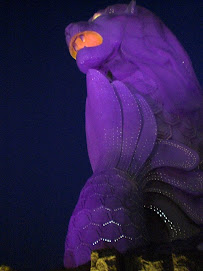




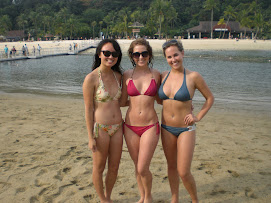
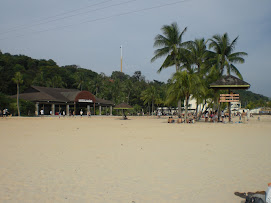


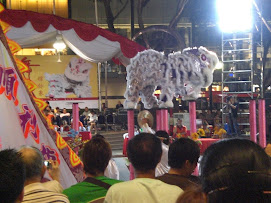
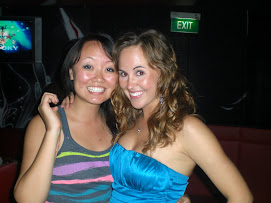



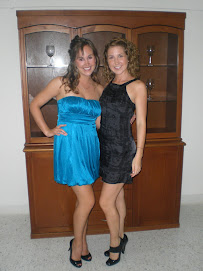


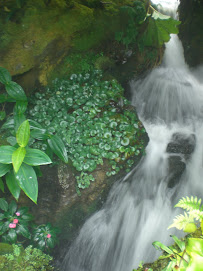



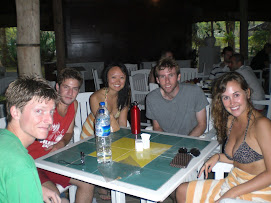
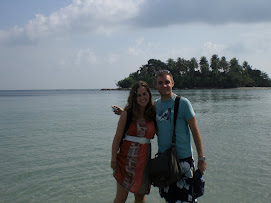
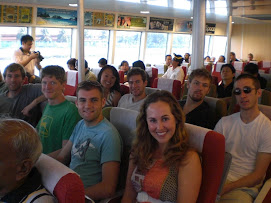

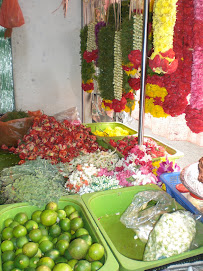


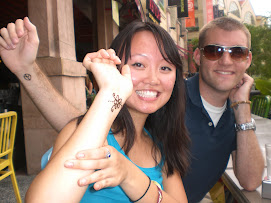
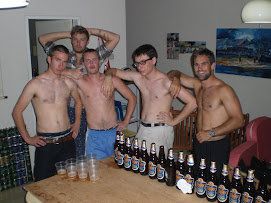
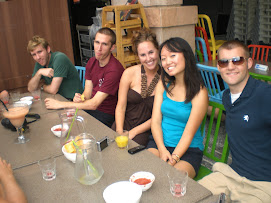

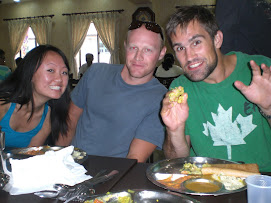

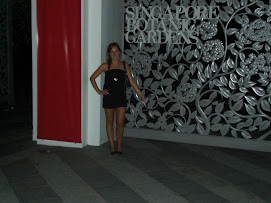
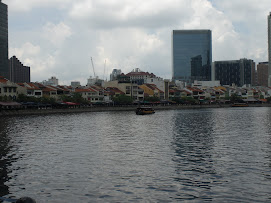



No comments:
Post a Comment